A flying razor blade: the Fokker E.V/ D.VIII
About the Fokker E.V/ D.VIII
Even in 1918, towards the end of the Great War and after four years of diligent pioneering work to develop ever more powerful aircraft, the sight of a monoplane was still a rarity. All the more so when it was the design of a necessarily manoeuvrable high-performance fighter.
Nevertheless, Fokker's prototype monoplane V28 made such a good impression at the Idflieg comparison flight in July 1918, that it was ordered into immediate production under the designation Fokker E.V.
From August onwards, the unusual silhouette of the E.V could be seen in the fighter squadrons in the West, and a total of 289 examples of the strutted high-wing aircraft were to be produced and delivered by the end of the war.
Decisive for the excellent performance of the new Fokker type was the single wing, which decisively minimised air resistance: designed around an extremely stable box made of plywood, the wing not only gave the aircraft an aerodynamically clean cross-section, but also gave the pilot unimagined good visibility.
Conventional in every other respect, the design could compete with the contemporary cutting edge. A 160 hp Oberursel III rotary engine accelerated the E.V to a full 200 km/h, the loaded Fokker weighing 600 kilograms needed 4.5 minutes to climb to 200 metres, and in just under 20 minutes one was at an altitude of 6000 metres.
The wing, the secret of the Fokker E.V's success, also nearly brought the design down -and several pilots to their deaths. After two cases of the wing disassembling itself in flight for unexplained reasons, leading to fatal crashes, all Fokker E.Vs were grounded in August, the month of their introduction.
The subsequent investigation identified poor quality manufacturing as the cause of the accidents: improper gluing had allowed moisture to enter the wing box, the destructive effect of which had caused the wooden joints to break.
After the danger had been averted by new production specifications, delivery of the new Fokker, incidentally under the new designation D.VIII, was continued. Despite the rapid distribution and the good acceptance by the pilots of the fighter squadrons, the promising high-wing plane arrived too late to be able to intervene decisively in the fighting. However, the time was enough to give the D.VIII a nickname that referred to the monoplane concept: "Flying Razor" probably describes the appearance of this machine quite well!
Some Fokker D.VIIIs escaped delivery to the Allies or destruction after the end of the war, only to reappear a short time later in the conflicts that arose in the wake of the World War. D.VIIIs were flown by right-wing "Freikorps" or, on a somewhat larger scale, were used in the Polish war against the Soviet Union.
My example shows an E.V/ D.VIII that was still in use by the German Imperial Air Force. The unclear circumstances towards the end of the war probably also contributed to the fact that attempts to classify this machine lead to contradictory results: Actually, this Fokker with the characteristic angst-ridden rabbit was assigned to a naval field fighter squadron. Aircraft of this unit, however, usually had a yellow-painted tail fin. The black and white striped version documented here, on the other hand, refers to the Jasta 8.
However, this aircraft, so peculiarly marked with snakes and rabbits, is one of the better known examples of the Fokker D.VIII.
About the kit
The contents of the kit box, which has an attractive cover picture, are to be praised in all points! The kit meets the high expectations that can be placed on a "Profipack" from Eduard. Accordingly, the building process was quick and problem-free, which for me personally was enhanced with two new experiences as a special bonus.
Firstly, I dealt with the topic of "Lozenge" for the first time, whereby the enclosed decals of the seemingly complicated camouflage ensured a simple implementation. Secondly, I was able to test the use of "turnbuckles" from the manufacturer Gaspatch - in two places. As expected, this was also successful and encouraging enough that I am already looking forward to more elaborate projects.
All in all, I see this building experience as a nice opportunity to try out something new, in order to have something unusual in the showcase soon afterwards. I can recommend this modelling experience to anyone who is interested!
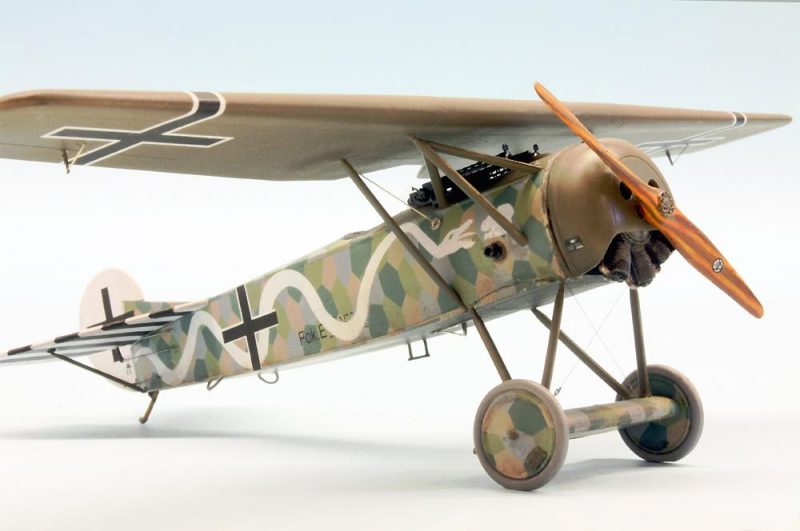
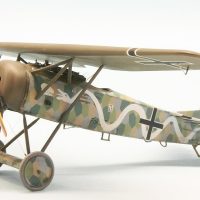
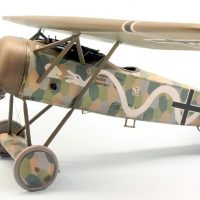
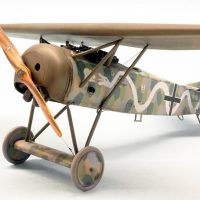
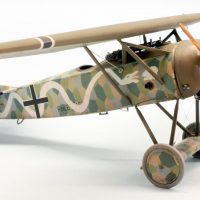
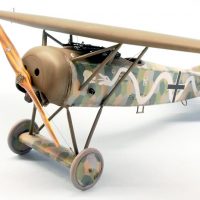
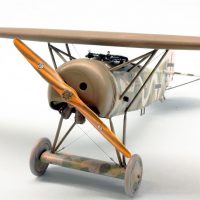
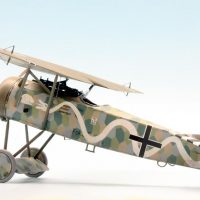
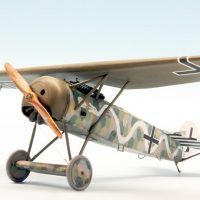
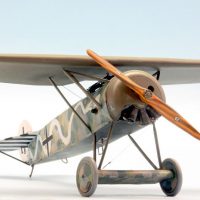
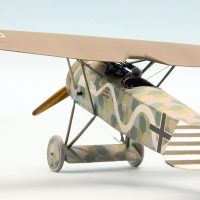
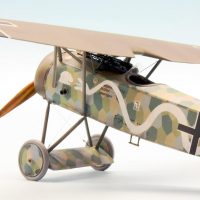
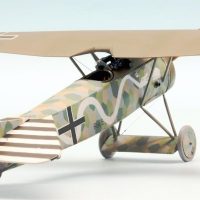
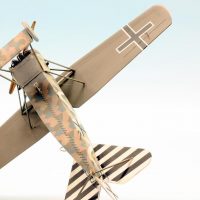

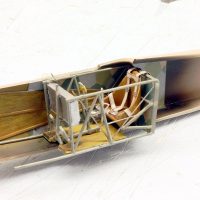
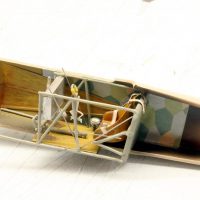
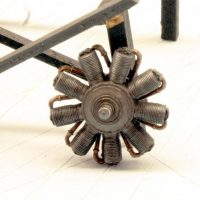
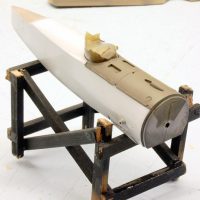
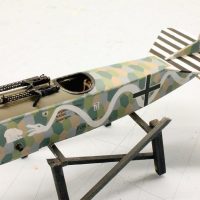
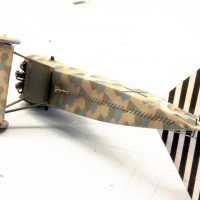
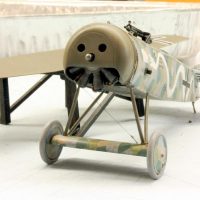

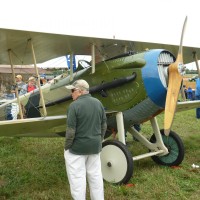
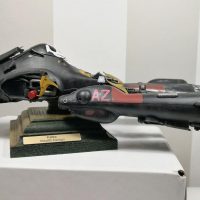
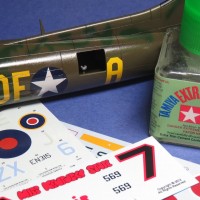
This is yet another wonderful model you presented to us, my friend Roland!
You did your usual truly amazing and detailed job, let alone the equally amazing presentation.
Congratulations!
Another nice one! Good looking aircraft with not much rigging to do
My dad built the same one several years ago.
Wow! Great job Roland. That looks fantastic.
Very realistic! It’s a beauty
A high quality build, Roland @rosachsenhofer
Exceptional to see the crosses on top and bottom of the wing being connected to each other.
Well done. Inspiration to get mine off the stash!
What's not to like about this, just terrific.
Real Beauty Roland, nicely done.
Smart... very smart, Roland. Welcome to the world of the 'lonzenger'... very accomplished first attempt... ;-).
Regards,
Paul
Very nice! Looks strange to see something in lozenge camo with only one wing!
That really looks incredible and like a fun build. I love the look of it and you did a great job with all those Lozenge decals. Most definitely would not try to duplicate it in paint.
Roland, @rosachsenhofer
This is an amazing build ! You have captured details in 1/48 scale that many would be hard pressed to do in a larger size. Particularly noteworthy is the cockpit and especially the side walls. The lozenge decals on this model have turned out well, and they look very impressive. This is one of my favorite WW1 fighters. I have seen a full size flying replica at Kermit Weeks' Fantasy of Flight museum. Here are some of the pictures I took.
I have several more pictures, and if you are interested I will send them to you as a PM.
Well done my friend ! I definitely pressed the "liked" button. Thanks for sharing it with us. Your written article was also very good. I learned some things by reading it.
Louis, thank you very much for your comments and these wonderful pictures!
I would be very happy to see more of this unique machine! If I ever manage to travel to Florida, this place is one of those things I want to visit.
Looks very nice! I built the same Eduard kit some yeas ago and had MASSIVE problems trying to align all struts for the wing. Like the minuscule turnbuckles and rigging.
The Eduard kit of the E.V/D.VIII is one of their best (or at least the remake to modern standards is - the early one is as close to unbuildable as an early limited-run kit gets - I speak from experience)
Very nice result here with this.
"Liked"
Very fine work!
I would like to thank everyone for the motivating and encouraging comments and tell you how much I appreciate it! Thanks to all of you!
With such encouragement, it can't be long before the next Fokker!
Very nice !
Thank you!